FHA Multifamily Loans
FHA Multifamily Loans
FHA multifamily loans present real estate investors and developers with highly advantageous financing alternatives. Although the Federal Housing Administration (FHA) doesn't directly originate these loans, they provide insurance for multifamily loans extended by third-party lenders to real estate investors. Following FHA guidelines, the third-party lender will process and underwrite the loan to secure the insurance. There are two main types of FHA-insured loans available for multifamily investors: the FHA 223(f) multifamily loan program and the FHA 221(d)(4) multifamily loan program. Continue reading for more details on these multifamily loan options.
LOAN TYPES
- Apartment Loans
- Business Real Estate Loans
- CMBS Loans
- Commercial Real Estate Loans
- Fannie Mae Multifamily Loan
- FHA Multifamily Loans
- Freddie Mac Multifamily Loan Rates
- Freddie Mac SBL Multifamily Loans
- HUD Multifamily Loans
- Investment Property Loans
Our Best FHA Multifamily Loan Rates
[table id=10 /]
FHA Multifamily Loan Benefits
An Allied Mortgage broker with over 30 years of lending experience
- No upfront application or processing fees
- Simplified application process
- Up to 85% LTV on multifamily
- Terms and amortizations up to 35 years
- Loans for purchase and refinance, including cash-out and construction
- Quick pre-approvals with no cost and no obligation
FHA 223(f) Multifamily Loan Program
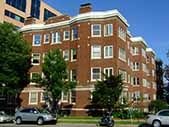 The FHA 223(f) multifamily loan program is designed to assist investors in purchasing and refinancing multifamily properties. While some may believe that HUD only insures affordable and Section 8 housing, the truth is that the HUD 223(f) loan program is an excellent choice for financing various types of multifamily properties across the United States. As one of the best financing options in the market for multifamily investors, the FHA 223(f) multifamily loan insurance program provides exceptional benefits.
The FHA 223(f) multifamily loan program is designed to assist investors in purchasing and refinancing multifamily properties. While some may believe that HUD only insures affordable and Section 8 housing, the truth is that the HUD 223(f) loan program is an excellent choice for financing various types of multifamily properties across the United States. As one of the best financing options in the market for multifamily investors, the FHA 223(f) multifamily loan insurance program provides exceptional benefits.
FHA 223(f) Multifamily Loan Program
The FHA 221(d)(4) multifamily loan program aims to finance the development and substantial rehabilitation of multifamily properties. Through these loan programs, the FHA fulfils the vital purpose of its insurance programs: ensuring ongoing availability of capital for the acquisition, rehabilitation, development, and refinancing of all apartment properties.FHA insured multifamily loans offer investors remarkably long loan terms and amortization schedules. The FHA 223(f) loan program provides fully amortizing terms of up to 35 years, while the FHA 221(d)(4) loan program offers terms of up to 43 years. The multifamily construction loan under the FHA 221(d)(4) program includes up to 3 years of interest-only financing during the construction period, followed by an additional fully amortizing term of up to 40 years. Compared to traditional lenders, monthly payments on multifamily FHA loans are significantly lower due to the program's extended amortization periods. Another significant advantage of these programs is that the FHA does not discriminate based on geographical locations and markets. While many lenders may choose not to lend in small and rural markets, the FHA provides loan insurance for properties in these areas. However, it is important to note that FHA insured multifamily loans have drawbacks, including the extended time required to close the loan and the bureaucratic processes that borrowers must navigate. These loans can take anywhere from 5 to 10 months, depending on the property's location and the FHA's current workload. Furthermore, FHA insured loans necessitate annual financial audits and are generally more expensive than traditional multifamily loans.
Mortgage Insurance Premium (MIP)
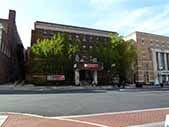 There is a common misconception in the multifamily industry that FHA directly provides multifamily loans to developers and real estate investors. In reality, these loans are actually originated by third-party lenders, while the FHA's role is to underwrite and insure them. This is where the mortgage insurance premium comes into play. All FHA borrowers are required to pay a mortgage insurance premium at the time of closing and annually thereafter. Typically, borrowers pay 1% of the loan amount to the FHA at closing and 0.6% annually thereafter. However, there are MIP discounts available for affordable properties and green properties. Affordable and subsidized properties are eligible for discounts ranging from 0.25% to 0.35%, while Green/Energy Star certified properties receive a discount of 0.25%. The FHA collects these premiums and utilizes them to insure the loans issued by third-party lenders. In the event that a borrower defaults on a loan, the FHA uses the collected premiums to reimburse the third-party lender. Essentially, the mortgage insurance premium paid to the FHA enables these loans to be offered at attractive rates with extended terms and amortization periods.
There is a common misconception in the multifamily industry that FHA directly provides multifamily loans to developers and real estate investors. In reality, these loans are actually originated by third-party lenders, while the FHA's role is to underwrite and insure them. This is where the mortgage insurance premium comes into play. All FHA borrowers are required to pay a mortgage insurance premium at the time of closing and annually thereafter. Typically, borrowers pay 1% of the loan amount to the FHA at closing and 0.6% annually thereafter. However, there are MIP discounts available for affordable properties and green properties. Affordable and subsidized properties are eligible for discounts ranging from 0.25% to 0.35%, while Green/Energy Star certified properties receive a discount of 0.25%. The FHA collects these premiums and utilizes them to insure the loans issued by third-party lenders. In the event that a borrower defaults on a loan, the FHA uses the collected premiums to reimburse the third-party lender. Essentially, the mortgage insurance premium paid to the FHA enables these loans to be offered at attractive rates with extended terms and amortization periods.
2023 FHA Multifamily Loan Statistics
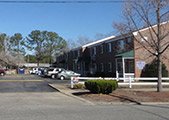 In 2023, the FHA provided insurance for approximately 1,800 loans, totalling over $29 billion, catering to commercial real estate investors and developers. These loans were extended for multifamily and healthcare properties across the United States. The FHA implemented several new policies that enhanced the appeal of their loan insurance programs for investors.Previously, the FHA mandated that developers of newly constructed apartment buildings wait a minimum of three years before becoming eligible to refinance their properties with FHA-insured loans. However, in 2020, the FHA eliminated this requirement, allowing developers to refinance their properties immediately upon stabilization. This policy change was widely embraced by developers in 2023, contributing to the FHA's achievement of record loan volumes year after year.Furthermore, the FHA started permitting investors to acquire multifamily properties through bridge loans while still qualifying for up to 85% loan-to-value (LTV) through the 223(f) program. This was highly advantageous for investors since the FHA loan process typically takes more than six months to complete. Most sellers are unwilling to wait that long for the sale to close. With this policy change, investors were able to purchase multifamily properties using short-term bridge loans and later transition into FHA loans after the initial acquisition. Many real estate investors capitalized on this policy modification in 2023, further contributing to the FHA's record loan volumes.Due to historically low interest rates and the aforementioned policy changes, the FHA experienced a significantly high level of activity throughout 2023. The loan approval and closing process often extended beyond 10 months as FHA offices across the country dealt with a backlog of deals amounting to billions of dollars. Many investors took advantage of the favourable low-rate environment by securing long-term fixed rates below 3%. As a result of these factors, the FHA captured a substantial share of the multifamily loan market in 2023.
In 2023, the FHA provided insurance for approximately 1,800 loans, totalling over $29 billion, catering to commercial real estate investors and developers. These loans were extended for multifamily and healthcare properties across the United States. The FHA implemented several new policies that enhanced the appeal of their loan insurance programs for investors.Previously, the FHA mandated that developers of newly constructed apartment buildings wait a minimum of three years before becoming eligible to refinance their properties with FHA-insured loans. However, in 2020, the FHA eliminated this requirement, allowing developers to refinance their properties immediately upon stabilization. This policy change was widely embraced by developers in 2023, contributing to the FHA's achievement of record loan volumes year after year.Furthermore, the FHA started permitting investors to acquire multifamily properties through bridge loans while still qualifying for up to 85% loan-to-value (LTV) through the 223(f) program. This was highly advantageous for investors since the FHA loan process typically takes more than six months to complete. Most sellers are unwilling to wait that long for the sale to close. With this policy change, investors were able to purchase multifamily properties using short-term bridge loans and later transition into FHA loans after the initial acquisition. Many real estate investors capitalized on this policy modification in 2023, further contributing to the FHA's record loan volumes.Due to historically low interest rates and the aforementioned policy changes, the FHA experienced a significantly high level of activity throughout 2023. The loan approval and closing process often extended beyond 10 months as FHA offices across the country dealt with a backlog of deals amounting to billions of dollars. Many investors took advantage of the favourable low-rate environment by securing long-term fixed rates below 3%. As a result of these factors, the FHA captured a substantial share of the multifamily loan market in 2023.
FHA 223(f) Multifamily Loan Program
 There is a common misconception in the multifamily industry that FHA directly provides multifamily loans to developers and real estate investors. In reality, these loans are actually originated by third-party lenders, while the FHA's role is to underwrite and insure them. This is where the mortgage insurance premium comes into play. All FHA borrowers are required to pay a mortgage insurance premium at the time of closing and annually thereafter. Typically, borrowers pay 1% of the loan amount to the FHA at closing and 0.6% annually thereafter. However, there are MIP discounts available for affordable properties and green properties. Affordable and subsidized properties are eligible for discounts ranging from 0.25% to 0.35%, while Green/Energy Star certified properties receive a discount of 0.25%. The FHA collects these premiums and utilizes them to insure the loans issued by third-party lenders. In the event that a borrower defaults on a loan, the FHA uses the collected premiums to reimburse the third-party lender. Essentially, the mortgage insurance premium paid to the FHA enables these loans to be offered at attractive rates with extended terms and amortization periods.
There is a common misconception in the multifamily industry that FHA directly provides multifamily loans to developers and real estate investors. In reality, these loans are actually originated by third-party lenders, while the FHA's role is to underwrite and insure them. This is where the mortgage insurance premium comes into play. All FHA borrowers are required to pay a mortgage insurance premium at the time of closing and annually thereafter. Typically, borrowers pay 1% of the loan amount to the FHA at closing and 0.6% annually thereafter. However, there are MIP discounts available for affordable properties and green properties. Affordable and subsidized properties are eligible for discounts ranging from 0.25% to 0.35%, while Green/Energy Star certified properties receive a discount of 0.25%. The FHA collects these premiums and utilizes them to insure the loans issued by third-party lenders. In the event that a borrower defaults on a loan, the FHA uses the collected premiums to reimburse the third-party lender. Essentially, the mortgage insurance premium paid to the FHA enables these loans to be offered at attractive rates with extended terms and amortization periods.
FHA 221(d)(4) Multifamily Loan Program
 Contrary to common belief, the FHA 223(f) loan program is not limited to non-profits, low-income housing, or affordable housing properties. Investors in all types of multifamily properties are eligible to take advantage of this program's benefits. This inclusivity extends its appeal and makes it an appealing choice for a wide range of multifamily investment ventures.The FHA 221(d)(4) multifamily loan program is highly regarded in the market for developers seeking financing for the construction of multifamily properties, as well as owners in need of substantial rehabilitation funds for their apartment buildings. This program offers the most advantageous combination of high leverage and long-term fixed-rate terms available in the multifamily industry. Furthermore, FHA 221(d)(4) loans are non-recourse and serve as a construction-to-permanent loan option. The program begins with a period of up to 3 years of interest-only payments during the construction phase, followed by a fully amortizing term of up to 40 years.
Contrary to common belief, the FHA 223(f) loan program is not limited to non-profits, low-income housing, or affordable housing properties. Investors in all types of multifamily properties are eligible to take advantage of this program's benefits. This inclusivity extends its appeal and makes it an appealing choice for a wide range of multifamily investment ventures.The FHA 221(d)(4) multifamily loan program is highly regarded in the market for developers seeking financing for the construction of multifamily properties, as well as owners in need of substantial rehabilitation funds for their apartment buildings. This program offers the most advantageous combination of high leverage and long-term fixed-rate terms available in the multifamily industry. Furthermore, FHA 221(d)(4) loans are non-recourse and serve as a construction-to-permanent loan option. The program begins with a period of up to 3 years of interest-only payments during the construction phase, followed by a fully amortizing term of up to 40 years.
FHA 223(a)(7) Multifamily Loan Program
 The FHA 223(a)(7) loan product is utilized by multifamily and healthcare investors who currently hold FHA loans and are looking to refinance their existing debt. There are various reasons why investors opt to refinance their current FHA multifamily loan into a new one. In periods of low interest rates, borrowers often seek to refinance for lower rates in order to increase their cash flow. Additionally, some borrowers utilize the FHA 223(a)(7) loan to extend their loan's amortization schedule. This product is highly favourable to the FHA since lower interest rates and longer amortizations translate to enhanced cash flow, ultimately reducing the risk of borrower default. One notable advantage of this product is that the FHA permits the prepayment penalty to be rolled into the new loan.
The FHA 223(a)(7) loan product is utilized by multifamily and healthcare investors who currently hold FHA loans and are looking to refinance their existing debt. There are various reasons why investors opt to refinance their current FHA multifamily loan into a new one. In periods of low interest rates, borrowers often seek to refinance for lower rates in order to increase their cash flow. Additionally, some borrowers utilize the FHA 223(a)(7) loan to extend their loan's amortization schedule. This product is highly favourable to the FHA since lower interest rates and longer amortizations translate to enhanced cash flow, ultimately reducing the risk of borrower default. One notable advantage of this product is that the FHA permits the prepayment penalty to be rolled into the new loan.
FHA 241(a) Multifamily Loan Program
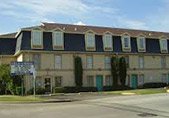 The FHA 241(a) Multifamily Loan program is specifically designed to provide supplemental financing for existing FHA borrowers. Its purpose is to ensure the competitiveness of current multifamily properties in the market. If you are an owner of an FHA-insured multifamily property seeking additional financing to make significant improvements, the FHA 241(a) multifamily loan program can be an excellent choice. These loans can also be utilized to implement energy-efficient infrastructure, acquire additional land, or finance construction costs for expanding an existing property. In 2015, the FHA 241(a) multifamily loan program facilitated a total of $25 million in financing across 974 units. To qualify for this loan program, the borrower must contribute at least 10 percent of the total loan cost.
The FHA 241(a) Multifamily Loan program is specifically designed to provide supplemental financing for existing FHA borrowers. Its purpose is to ensure the competitiveness of current multifamily properties in the market. If you are an owner of an FHA-insured multifamily property seeking additional financing to make significant improvements, the FHA 241(a) multifamily loan program can be an excellent choice. These loans can also be utilized to implement energy-efficient infrastructure, acquire additional land, or finance construction costs for expanding an existing property. In 2015, the FHA 241(a) multifamily loan program facilitated a total of $25 million in financing across 974 units. To qualify for this loan program, the borrower must contribute at least 10 percent of the total loan cost.
FHA 232/223(f) Healthcare Loan Program
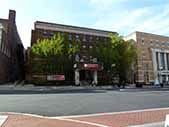 The FHA 232/223(f) loan is a federally insured loan program designed to assist investors in financing residential healthcare facilities. This program enables investors to fund the acquisition, refinancing, and substantial rehabilitation of properties like nursing homes and assisted living facilities. While it falls under the FHA umbrella, the Office of Residential Care Facilities oversees the program. Thanks to the federal government's insurance, these FHA loans offer highly favourable terms for healthcare real estate investors and developers.
The FHA 232/223(f) loan is a federally insured loan program designed to assist investors in financing residential healthcare facilities. This program enables investors to fund the acquisition, refinancing, and substantial rehabilitation of properties like nursing homes and assisted living facilities. While it falls under the FHA umbrella, the Office of Residential Care Facilities oversees the program. Thanks to the federal government's insurance, these FHA loans offer highly favourable terms for healthcare real estate investors and developers.
Multifamily Bridge to FHA Loans
 One of the primary concerns faced by potential FHA borrowers is the extended timeline required to close an FHA multifamily loan. Depending on market conditions and the property's location, these loans can take anywhere from 5 to 10 months to finalize. This extended timeframe poses a particular challenge for investors seeking to purchase multifamily buildings. Most sellers are unwilling to wait for over half a year to sell their property. To address this issue, we assist borrowers in securing bridge to FHA financing, resolving the timing problem and facilitating smoother transactions.
One of the primary concerns faced by potential FHA borrowers is the extended timeline required to close an FHA multifamily loan. Depending on market conditions and the property's location, these loans can take anywhere from 5 to 10 months to finalize. This extended timeframe poses a particular challenge for investors seeking to purchase multifamily buildings. Most sellers are unwilling to wait for over half a year to sell their property. To address this issue, we assist borrowers in securing bridge to FHA financing, resolving the timing problem and facilitating smoother transactions.